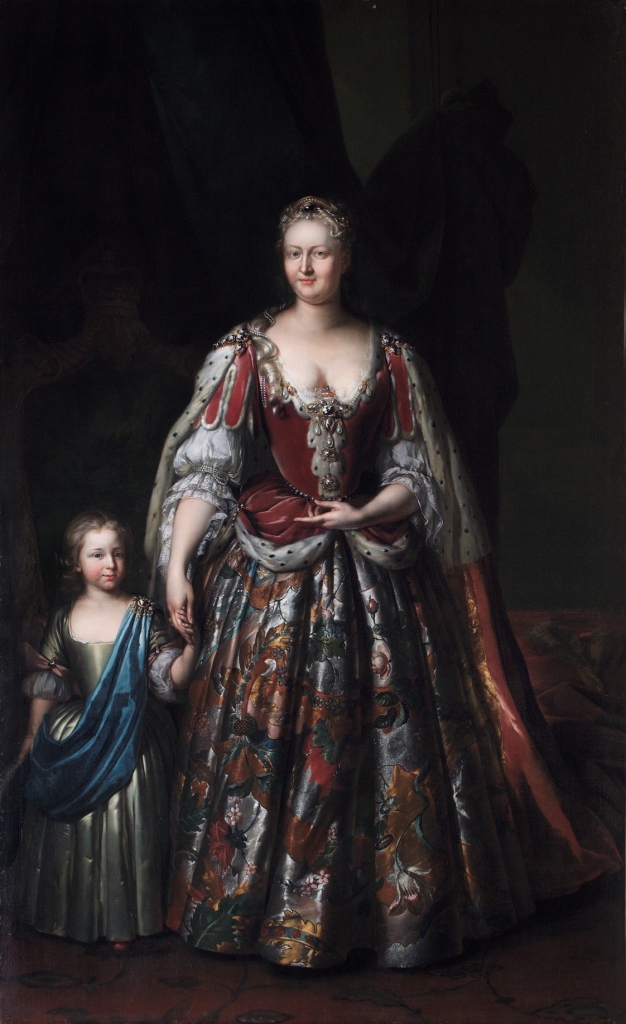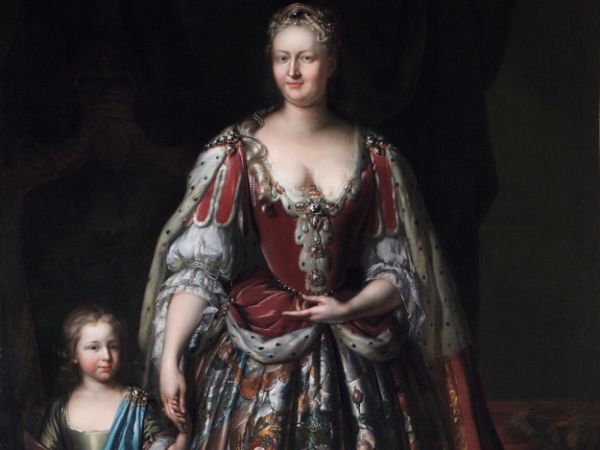Miranda Stearn, Arts and Heritage Development Co-ordinator, Orleans House Gallery
Scope of project
We wished to undertake research into the provenance, attribution and iconography of Queen Caroline of Ansbach with her son, later the Duke of Cumberland, c. 1728, a portrait held in the Borough Art Collection of the London Borough of Richmond upon Thames and on permanent display in the Octagon room at Orleans House Gallery. The painting had no firm attribution or date, although over the years the work had been attributed to a number of artists including Herman Van Der Myn. The painting currently forms a centrepiece of visitors’ experience of the Grade I listed Octagon Room, designed by James Gibbs and apparently added to Orleans House specifically to provide a venue fit for entertaining the Hanoverian royal family. Despite its prominent display, the lack of information means that we are unable to offer visitors more than a superficial interpretation of this key work.
As a result of the project, we have been able to discover the provenance of the painting prior to entering the Orleans House Gallery Collection. We now know it was purchased at auction in 1938 from the sale of contents of Hartwell House, where it had been from at least 1851 but probably (given the family’s links with the Hanoverian royals) since its creation. We are also reasonably confident in the attribution to Herman Van Der Myn, which is reinforced by correspondence held in the Heinz archive as well as a Dutch academic article.

Queen Caroline of Ansbach (1683–1737), with her son, later the Duke of Cumberland, c.1730.
© Richmond upon Thames Borough Art Collection
Outcomes
The intended outcome of this research project was to create new interpretation for the portrait, initially in situ, and subsequently as part of the new interpretation strategy for the Octagon room following its interior restoration. During the course of the research, we realised that there was huge potential to engage visitors more fully in the wider story of Queen Caroline, William Duke of Cumberland and the rest of their immediate family, particularly by focusing on the court of Caroline and George II. We also wanted to share more fully the process of uncovering the history of the portrait. We have therefore decide to develop a main gallery exhibition focusing on these themes for 2014. This is particularly appropriate as it coincides with the tercentenary of the arrival of the Hanoverian royals in the UK and will enable us to make links to exhibitions, events, publications and conferences being organised to mark this anniversary.
To date (July 2013) we have created new in-room interpretation for the portrait reflecting these findings, and have updated the collection catalogue records. The main outcome of the project will be our proposed Queen Caroline exhibition in 2014. We have also shared the project findings through the UBP blog and through our Gallery e-newsletter.
Professional development
For me personally, the project revitalised my interest and confidence in carrying out collections research, particularly in relation to provenance (I hadn’t known, for example, that auction house catalogues used to list the buyers at the front). Specifically, I had never used the Heinz Archive before so it was wonderful to discover and learn to use that resource. Because of the way we ran the project and made use of the grant, there were CPD benefits across the wider team, for example our curator, creative apprentice and two volunteers came on the visit to the Heinz Archive and on research visits to see portraits of Queen Caroline at Oxburgh Hall and Hardwick Hall. Students on work placements have also gained skills through their involvement in the project. The books and resources we purchased with the grant are also being used by members of the education team, and the new knowledge and understanding about the portrait and its history have been disseminated through the wider gallery team.
contact: Miranda.Stearn[at]richmond.gov.uk


